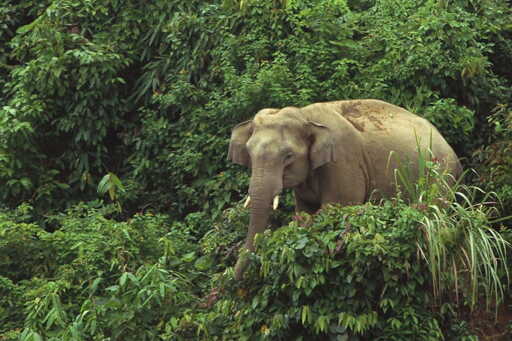Communities living around a remote, mountainous forest in southeastern Bangladesh, close to Myanmar, have reported cross-border incidents of elephant poaching for years but there was no confirmed evidence. A new study has now documented the first known physical signs of elephant poaching in the forest. The Sangu-Matamuhuri Reserve Forest in southeastern Bangladesh, bordering Myanmar’s Rakhine state, is rich in biodiversity and a critical habitat for a variety of wildlife, including Asian black bear (Ursus thibetanus), golden jackal (Canis aureus) and the endangered Asian elephant (Elephas maximus). “The Sangu–Matamuhuri landscape is a uniquely important region. Elephants were once common here, but over time their population declined,” Sourav Chakma, lead author of the study, told Mongabay in an email. The surviving elephants retreated to the sparsely populated border with Myanmar where hunting pressure was lower, Chakma said. “Contradictorily, however, the remoteness of the region and its scattered settlements also facilitate access to hunting from both sides of the border, much of which goes unreported and poses a significant threat,” he added. Bangladesh’s Sangu-Matamuhuri forest has been the apparent site of recent elephant poaching. Map by Andrés Alegría/Mongabay. A team of four visited the reserve forest from April 23-25 and found signs of elephant activity including elephant footprints, dung and evidence of foraging. They estimate elephants had been in the area 2-4 months earlier, which tracks with local reports that elephants use the region during the local dry season, from November to March, the authors write. The team also found evidence of poaching:…This article was originally published on Mongabay
From Conservation news via this RSS feed


